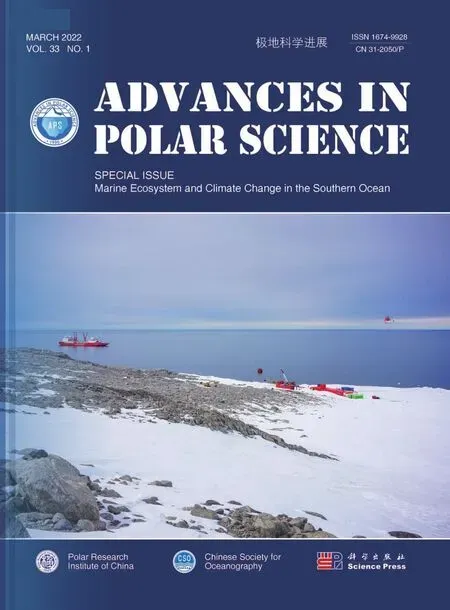One special issue will be published in late 2022
2023-01-14
One special issue will be published in late 2022
The special issue entitled “Emerging Technologies and Their Application in the Polar Regions” will be published in December 2022 as general issue (Vol. 33, No. 4), the theme of which focuses on autonomous profiling floats; under-ice gliders (AUV and ROV); deep-ocean rovers; automatic weather stations; unmanned aerial vehicles; robotic camera systems; in situ sensors and methods for collecting autonomous observations. We are so honored to invite Dr. Keith Makinson (British Antarctic Survey, UK), Prof. Pavel Talalay (Institute for Polar Science and Engineering, Jilin University, China) and Dr. Yi Zhang (Architectural Design & Research Institute, Tsinghua University, China) as Guest Editors to organize this special issue.
We sincerely invite you to contribute to this special issue or other general issues in 2022 and beyond. Submissions deadline for this issue is May 31, 2022. Submission website: https://mc03.manuscriptcentral.com/apsci
(APS) is an international, peer-reviewed and open-access journal sponsored by the Polar Research Institute of China (PRIC) and Chinese Society for Oceanography. Since 2015, APS has become more truly international, and been improving, with its inclusion in Elsevier’s Scopus, the largest abstract and citation database of peer-reviewed literature in May of 2020. Articles published on APS are free of charge with generous funding from PRIC.
From 1 May 2021, Dr. Ad Huiskes, a biologist from the Netherlands and an Associate Editor of APS since 2015, replaced Prof. Ian Allison as the co-Editor-in-Chief. The Editorial Board renewed in 2021, consists of 38 disciplinary Editors (20 international Editors and 18 Chinese Editors). In 2020, APS celebrated its 30th anniversary since foundation. By the end of 2021, APS had published 85 issues (including 20 special/thematic issues), and the authors of these papers come from 30 nations.
杂志排行
Advances in Polar Science的其它文章
- Foreword
- “Opinion Editorial” category attracts more attention
- Potential suitable sites for the calibration of Scientific Echo Sounder in the marginal seas around Antarctica
- Research on submesoscale eddy and front near the South Shetland Islands (Antarctic Peninsula) using seismic oceanography data
- Variability of size-fractionated phytoplankton standing stock in the Amundsen Sea during summer
- Particle dynamics revealed by 210Po/210Pb disequilibria around Prydz Bay, the Southern Ocean in summer
